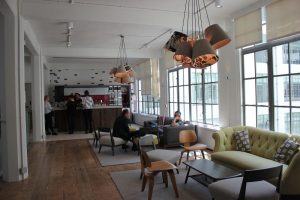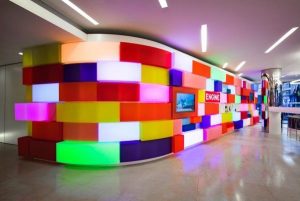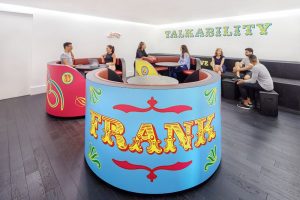As an expert, I can provide insights into the most important things to have in an office to create a productive and functional workspace. Here are some essential elements:
- Comfortable and Ergonomic Furniture: Invest in high-quality, ergonomic office furniture that promotes comfort and supports proper posture. Ergonomic chairs, adjustable desks, and supportive equipment can help prevent discomfort and long-term health issues associated with prolonged sitting.
- Sufficient Lighting: Good lighting is crucial for a productive office environment. Incorporate a combination of natural light, task lighting, and ambient lighting to minimise eye strain, enhance visibility, and create a pleasant atmosphere. Ensure that workstations are well-lit and that lighting levels can be adjusted to individual preferences.
- Efficient Storage Solutions: Effective storage solutions are essential to maintain a clutter-free workspace. Provide ample storage options such as filing cabinets, shelves, and drawers to keep documents, supplies, and personal items organised. Digital storage solutions can also help minimise physical clutter by facilitating efficient information management.
- Reliable Technology and Connectivity: A well-equipped office requires reliable technology and seamless connectivity. Provide employees with up-to-date computers, fast internet connections, and necessary software tools to perform their tasks efficiently. Additionally, consider investing in collaborative technology such as video conferencing systems, project management software, and cloud storage for streamlined communication and productivity.
- Adequate Workspace and Privacy: Employees need sufficient workspace to carry out their tasks comfortably. Ensure that workstations provide enough desk space, legroom, and storage options. Consider the balance between open spaces for collaboration and designated areas or private offices where employees can focus and have privacy when needed.
- Proper Ventilation and Temperature Control: Maintaining a comfortable and healthy environment is crucial. Adequate ventilation and temperature control systems are essential to regulate air quality and temperature. Good air circulation can help prevent fatigue, improve concentration, and contribute to overall well-being.
- Communication and Collaboration Tools: Encourage effective communication and collaboration among team members by providing tools such as whiteboards, bulletin boards, project management software, and video conferencing facilities. These tools foster idea sharing, brainstorming, and seamless collaboration on projects.
- Well-Stocked Office Supplies: Having a readily available supply of essential office items is essential for smooth operations. Stock up on stationery, printer paper, ink cartridges, and other necessary supplies. Consider providing communal areas with shared resources like printers, copiers, and scanners for easy accessibility.
- Comfortable Break and Relaxation Areas: Designate spaces for employees to take breaks, relax, and recharge. Furnish these areas with comfortable seating, recreational items like games or books, and amenities such as coffee machines or a kitchenette. Encouraging regular breaks promotes well-being, creativity, and team bonding.
- Safety Measures: Ensure that the office environment adheres to safety standards. Provide fire extinguishers, smoke detectors, first aid kits, and clear emergency exit routes. Regularly inspect and maintain electrical equipment, and establish protocols for workplace safety and security.
By incorporating these essential elements into an office space, you can create a conducive environment that supports productivity, collaboration, and employee well-being. Tailor these elements to the specific needs of your organization, considering the nature of work, industry, and the preferences of your employees.



